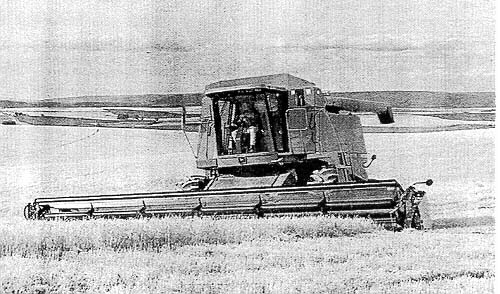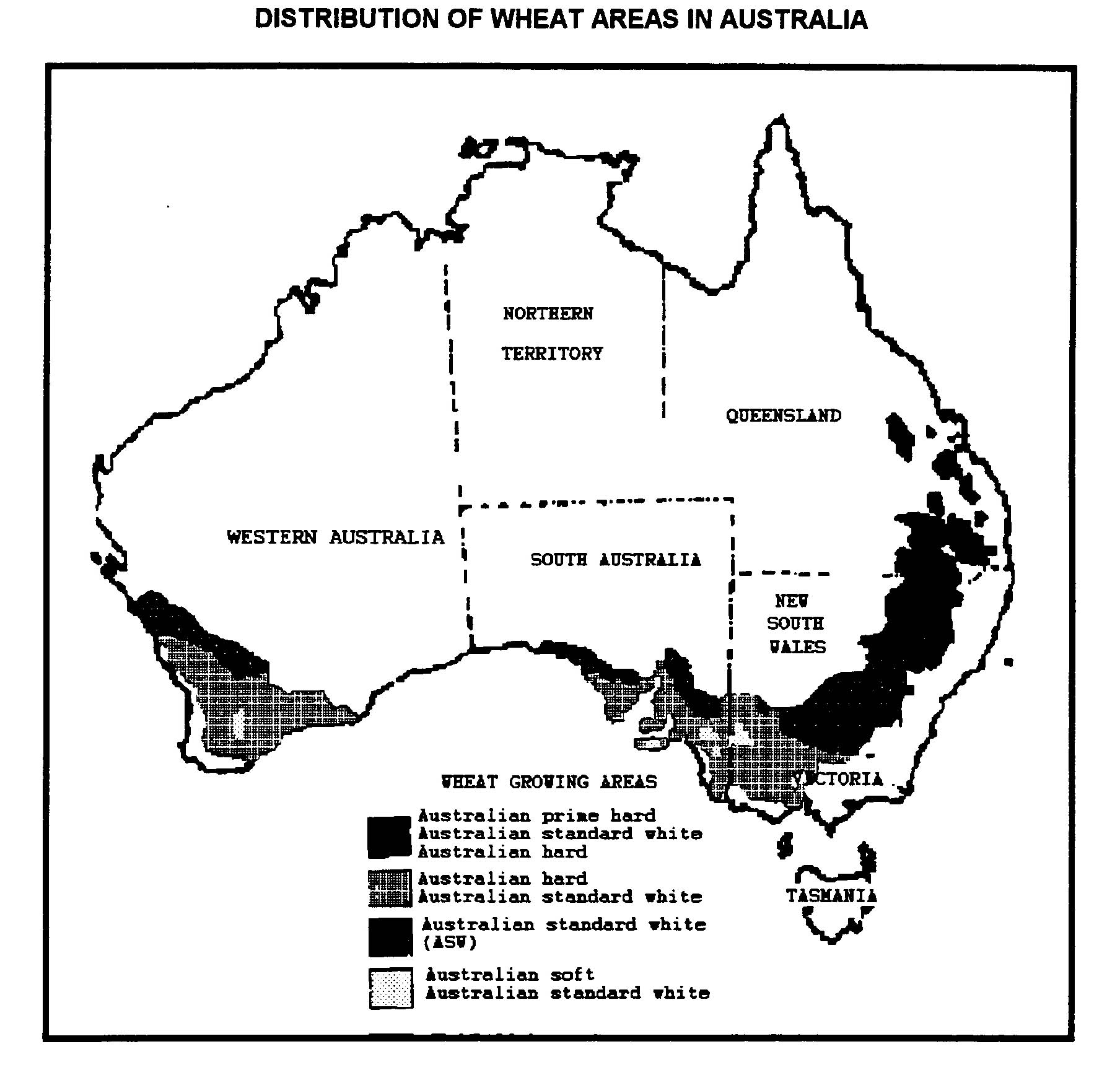SPRING
CEREALS
GRAIN
SORGHUM
In
the dryland farming areas grain sorghum is the most important summer
grain. Not all crops are grow to maturity and the expected yields
are unpredictable largely because of the unpredictability of the
summer rains in NSW. It provides excellent fodder and being fed to
stock in dry seasons. Sorghum growing has shown a dramatic increase
in the recent years and after wheat and barley, is the most important
crop in the dryland belt.
The
grain is used in feed mixes for poultry, pigs and cattle. The
genetics of grain sorghum has changed dramatically and almost all
seed sown is from hybrids.
BIRD
SEED
Millets
for bird seed are almost all produced in dryland farming districts. The
seasonal conditions necessary for millets are almost identical
with those required for grain sorghum. As with many less significant
crops there is a trend for a small number of farmers on adjoining
properties to adopt similar cropping practices so that a "millet
area" is established. Seed millets are largely grown on the
border region between Queensland and NSW.
OILSEED
SUNFLOWERS
Dryland
farmers of the summer rainfall belt, crop significant quantities of
sunflowers for the edible oil seed industry. Quick growing varieties
have been developed and can survive a large variety of soil types.
Farmers with lighter sandy soils have a better chance of success with
sunflowers than with grain sorghum if they require a summer cash
crop. The major pests are Galahs and cockatoos. The yield is only
about half that expected from grain sorghum, however, as the market
potential is good they are a good proposition in the summer rainfall
belt.
WHEAT
Not
all winter cereals are grown in the winter rainfall belt. By careful
seedbed preparation and astute weed control farmers can store
moisture from summer rains in the soil to aid winter crop production.
Large improved wheat seeding machines have been developed allowing
the farmer to sow the entire farm within a few days. This reduces
risk as wheat growing relies on a small amount of precipitation to
ensure sufficient soil moisture for uniform germination. If soil
preparation has been thorough, wheat may grow in areas with
precipitation as low as12 cm per annum. Distribution of the rain is
most important with the critical times (NSW ) being June, August and
September. Quick growing wheats or early maturing wheats have been
developed which mature in November even when sown in July. The use of
such quick growing varieties reduces risk.
The
growing season for wheat is increases in the southern parts of NSW
and Victoria. In Victoria, the growing season may extend from April
to November. Northern wheats are used predominantly in the bread
baking industry. Bakers require 11% protein in wheat flour and it has
to have special characteristics which will permit the loaf to rise.
Biscuit wheat is quite different and is grown in the southern areas
of NSW. Biscuits do not rise and therefore, require a low protein
wheat.
Two
other types of wheat are grown in small quantities specifically for
winter grazing and the other for breakfast cereal industry. The
latter is high in protein but with a protein lacking the chemical
properties necessary for bread making. The classification of wheats
is shown below:
DIAGRAM
1 A NUMBER OF HEADERS AND TRUCKS ARE USED IN A COORDINATED EFFORT TO
HARVEST THE WHEAT IN LARGE PADDOCKS IN WESTERN NSW. THE AIM IS TO
HARVEST AS QUICKLY AS POSSIBLE TO SAVE COSTS AND ANY DETRIMENTAL
EFFECTS FROM THE WEATHER
DIAGRAM
2 A TYPICAL HEADER, HARVESTING WHEAT. WITH MINOR MODIFICATIONS THE
SAME HEADER CAN BE USED TO HARVEST CANOLA
TABLE
1
AUSTRALIA'S
WHEAT CLASSIFICATION
| CLASS |
PRIME |
HARD |
ASW
|
|
SOFT
|
|
DURUM |
| GENERAL
|
FEED |
|
|
|
PURPOSE |
|
|
|
HARD |
|
|
|
|
|
|
GRADE
|
Aus Prime Hard |
Aus Hard White |
Aus Standard |
Aus Soft
|
Aus Durum |
Aus General Purpose |
Aus Feed |
PROTEIN
RANGE:
|
13-15%
|
#1 |
|
|
#1 |
#1 |
|
|
11.5-14% |
|
13%
|
|
#2 |
|
|
|
#2
|
|
#2 |
|
|
|
|
|
11-13%
|
|
11.5% |
|
|
|
|
REGIONS
OF
PRODUCTION: |
Qld NSW Vic* SA
|
Qld* WA NSW* Vic SA
|
Qld WA SA NSW |
NSW VIC SA WA |
NSW SA
|
Qld NSW Vic WA |
Qld SA NSW Vic WA
|
Source:
Australian Wheat Board
The
distribution of wheat types is shown in diagram
3. This shows clear regional variations between wheat type
with the prime hard wheat being grown almost exclusively in northern
NSW and southern Queensland.
DIAGRAM
3 DISTRIBUTION OF WHEAT VARIETIES
See
SOILS – WHEAT
DISEASES
RUST:
Rust is potentially the most serious disease affecting wheat
production in NSW. New rust resistant varieties are being continually
used and improved. It is caused by a fungus which like all other
successful parasites has the ability to adapt to new hosts.
Fortunately,
there are still several varieties of wheat with an inherent resistant
to rust. Breeders use these varieties with existing susceptible
varieties to obtain a combination of characteristics necessary for
economic wheat production. Another fungus attacks the roots of wheat
causing "rootrot". A serious epidemic of this disease can
be prevented by crop rotation.
Farmers
are able to control another fungus disease called "take all"
or "stinking smut". This disease is controlled by
"pickling" wheat prior to sowing. The seeds of a number of crops are
treated with fungacidal dusts before sowing.
WEEDS
Weed
build up can cause serious competition with wheat, reducing yields
however, most weed problems are reduced using crop rotations. If a
farmer chooses to increase the cropping phase rather than the ley
phase on a rotation he has to employ strategies to kill the weeds.
Several herbicides are available and the farmer has to decide whether
the cost of the herbicide is less than the expected marginal return.
See
BLACK OATS
See
OATS AND BARLEY
See
SUBTERRANEAN CLOVER SEED
See
LINSEED AND RAPESEED
See
CANOLA
6



